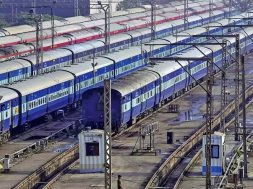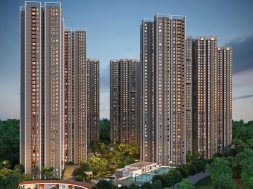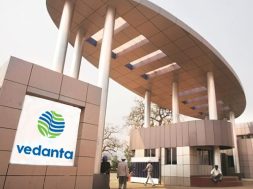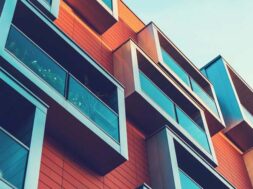“In light of the fast depleting natural resources, energy scarcity and rising costs; it is imperative that energy efficient practices be mainstreamed even to the residential property segment, especially if the country wishes to meet its collective objective of energy security required for future development”, writes Sachin Sandhir, MD and Country Head, Royal Institution of Chartered Surveyors (RICS).
Over the last few years there has been a seismic shift in the design and construction industry and how we perceive buildings and our awareness of the impact of the built environment on the planet and its inhabitant life. To an ever-increasing extent, our surroundings are being dominated by structures that constitute the visible cultural landscape of everyday life; forming a complex pattern of function and meaning, in which people’s perception of the world, their attitudes, and sense of relationships with it are closely interrelated.
Given the impact of development on the environment and the urgent need to preserve our natural habitat, the very least the building industry can do is contribute to delivering structures that minimize the negative impacts on the environment, and at most lend towards a built environment that is not only sustainable but restorative. Thus, it is logical to believe that building professionals, such as architects, structural engineers, building services engineers etc. along with Government bodies, policy makers and academicians are the relevant stakeholders who can influence decision-making on real estate development processes. Consequently, the attitudes and perceptions of such individuals will have a significant influence on the practice and acceptance of sustainable development.
So while the concept of ‘green buildings’ and ‘sustainable development’ has existed for quite some time; in India it is still relatively nascent, especially with respect to the implementation and widespread acceptance of these ‘drivers of change’. However, climate change and security concerns in the country have converged in a way that attention is drawn to the energy policy.
In order for the country to achieve its ambitious target of 8-10% growth in an attempt to alleviate poverty and beef up its infrastructural capabilities, the country needs to overcome its energy constraints. Given the potential that the country has in terms of access to renewable energy sources and energy efficient technologies, we can easily ‘leapfrog’ over the carbon intensive phase of development and move towards a low or carbon neutral economy, which also needs to transition to the built environment.
To this end, the recently concluded RICS India conference ‘Moving towards a low-carbon built environment in India’ while analysing the realty sector in tandem with its peculiar challenges has highlighted some broad actionable areas which could help steer the sustainable development movement in the country aiding in the much wider application and understanding of sustainability related concepts.
Passive Architecture – The Design Solution
Purely from a design perspective, we still seem to be in a transition phase, between discussion/evaluation and adoption. While just a few years ago the attitude towards sustainability was sceptical, it is today, by no means considered a ‘passing fad’. Today, the sustainable design approach has been able to produce better, less damaging and more efficient buildings. However, in the overall scheme of things such structures can only be termed as ‘green’ and not ‘sustainable’ until they have no negative operational impacts on the environment.
Thus, designers who embark on this endeavour must adhere to a philosophy that it is not merely a product or commodity being created; rather a service being rendered that will pass beyond the immediate client to benefit society at large. To this end, several design principles and conservation practices should aim to strike a vital balance between the historic and the contemporary to develop and maintain the ‘genius loci’. Far from obstructing change, the historic design must be viewed as a powerful catalyst for renewal and as a stimulus to high quality new design and development.
Globally there has been a high level of acceptance for vernacular/passive design principles which have ‘proved their mettle’, metaphorically speak through the passage of time. As design responses change dramatically across topography and climate, a high degree of regionalism has to feature in design protocols, an aspect that has been witnessed in these principles.
Balanced Approach to Addressing Sustainability Across Property Segments
Pattern of household energy consumption typically represents the stage of welfare as well as economic development. Ideally, as economies develop, higher degrees of cleaner energy should be consumed. India’s progress to economic self-reliance coupled with its rising population, improved standard of living and rate of urbanization has increased energy consumption within the building sector, though most of the green footprint continues to be dominated by the commercial property segment.
With approximately 80% of the building stock catering to the housing segment, industry sources indicate that residential property accounts for 31% energy consumption from fans, 26% from AC’s, and 12% from refrigeration, though households account for only 8% of total carbon emissions. With sustainable buildings said to reduce energy consumption by nearly 40%, ‘green homes’ could further improve their energy efficiency, as this is a concept home-owners can understand and related to, as everything translates into costs.
Moreover in light of the fast depleting natural resources, energy scarcity and rising costs; it is imperative that energy efficient practices be mainstreamed even to the residential property segment, especially if the country wishes to meet its collective objective of energy security required for future development.
Making Better Use of the Existing Building Stock
It has increasingly been indicated that sustainability to a large extent can also be achieved through better use of the existing stock of buildings. Demolition of existing and investing in new building stock is not always a viable option and energy retrofits can definitely be a first step in making the existing inventory more suitable for a low carbon future. However, until recently there have been limited assessment tools aimed at refurbishment, which in India are still non-existent.
However, the new RICS Ska Rating has been a significant and timely innovation. This rating which has been introduced in the UK, is based upon an assessment template covering certain parameters and supported by documented and tested standards, and undertaken by trained assessors. Also, like other international rating tools such as BREEAM and LEED, the Ska Rating charges a fee for a formal accreditation and certification, but is designed more for an informal self assessment. Such a tool can definitely find applicability within the Indian market as well, where a large existing building stock has the potential of being retrofitted.
Capacity Building for Sustainable Development
It is important that professionals are equipped with the necessary information, guidance and skills in order to make appropriate interventions that help adapt to climate change and mitigate its effects. Thus, there is little doubt concerning the important role that property and construction professionals play at each stage of the building lifecycle, given its overlap with the three elements of sustainable development (environmental, economic and social) that constitute the ‘triple bottom line’.
Additionally, as the science of low carbon buildings is more advanced than our capacity to implement these technologies and designs in India, it is critical to build capacity and train existing professionals on the principles and delivery of sustainable development. This knowledge also needs to be disseminated to contractors and semi-skilled professionals.
Data Collection and Monitoring Using Information, Communication and Technology (ICT)
It is a common perception that evaluation occurs after a project is completed. However, data collection should be built into the project design and should be undertaken on an on-going basis for evaluative purposes, so as to shape project design and sustainability over the life of the structure. Considering sustainability is a multidimensional concept with interplay of various factors, an integrated approach must be followed to assess its impact. To this end, it is essential that organisations effectively manage data, provide transparency and document performance in order to map the benefits of sustainable practices incorporated.
Additionally, adoption of information and communication technology (ICT) tools can provide greater access to information, enhance knowledge sharing, strengthen and support wider contributions to planning and governance, through an extensive range of interactive applications which can easily facilitate interfacing between science, governance, engineering and citizens. Such applications provide new opportunities to structure and manage dialogue about the design and management of urban environments and its overall impact.
Whole Lifecycle Costing Approach
One of the most common barriers for sustainability is associated with an increase of initial costs from an average of 2 to 7%. Additionally, decision-makers rarely use life cycle cost analysis to account for educed operating expenses and increased productivity and well being stemming from sustainability. This first-cost bias accompanied by the lack of research in the field of the cost benefit of green buildings comprises an unconvincing business case for high-performance green buildings. The life cycle cost includes continuous maintenance, energy, and repair costs. The savings associated with such a cost window are extremely high, considering that typically less then 10% of the total life cycle cost lies in construction, while 60-85% is related to on-going expenses.
However, it has been highlighted that there is a lack of tools and evaluation models that enable analysis of lifecycle cost and energy efficiency parameters on the same scale. RICS research ‘Lifecycle costing on sustainable design’ aimed to address this gap has uncovered many different approaches in the evaluation of sustainable options on a life cycle cost basis and recommends areas of further research.
Value of Sustainability
A truly comprehensive approach to sustainability goes beyond the expected benefit of health and well-being of individuals and the overall organization. It isn’t just a ‘nice to have’ practice but a smart business decision. However, there is a lack of data, especially in the private sector, as to why some projects employ sustainable design measures and others do not.
From a broader perspective, sustainable value must integrate environmental, social and economic dimensions into financial analysis and investment decision making to ensure that more sustainable practices and products are incorporated which directly or indirectly affect an organisations triple bottom line.
17
Cookie Consent
We use cookies to personalize your experience. By continuing to visit this website you agree to our Terms & Conditions, Privacy Policy and Cookie Policy.









